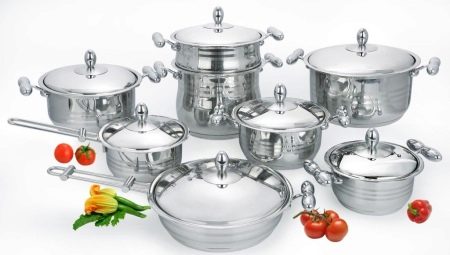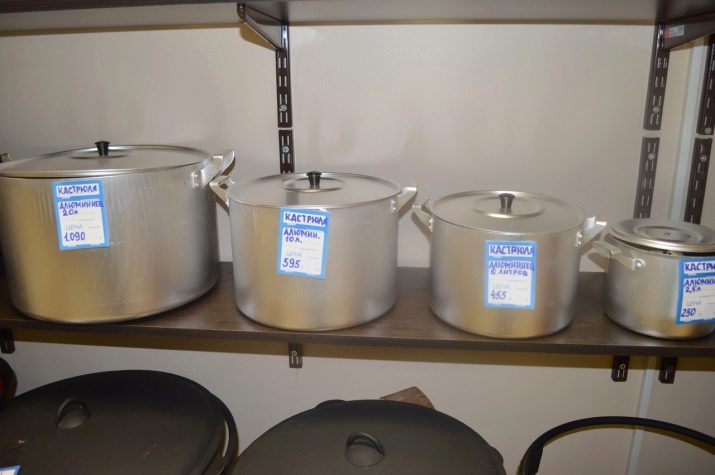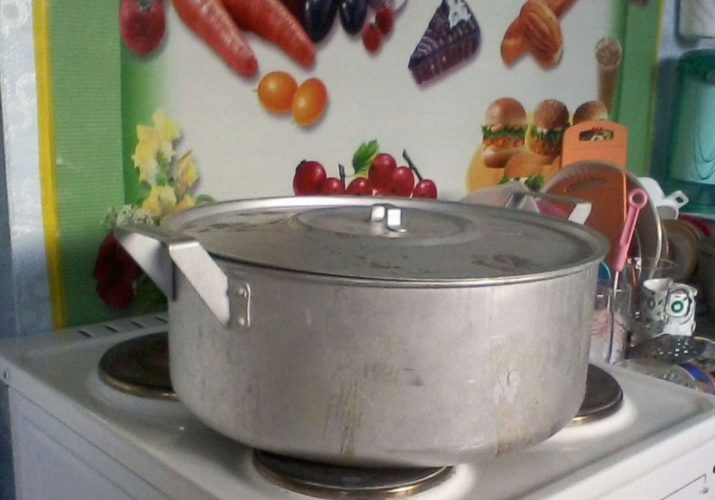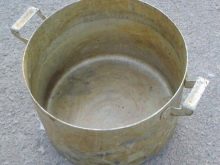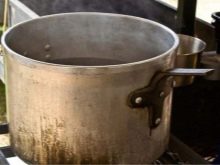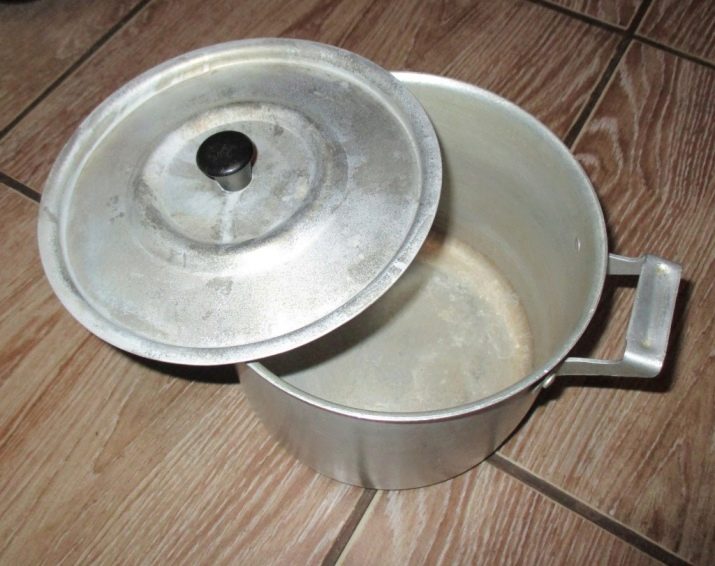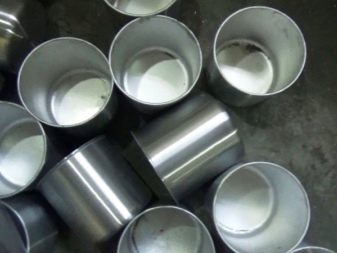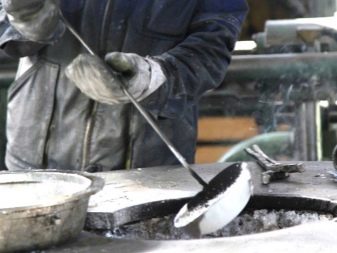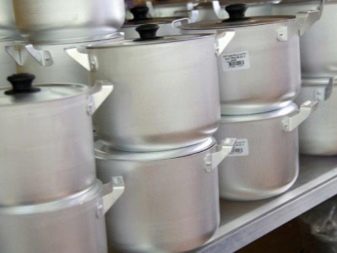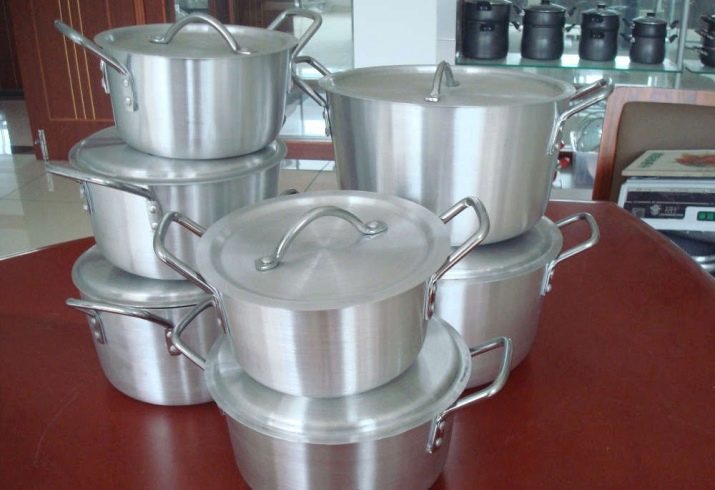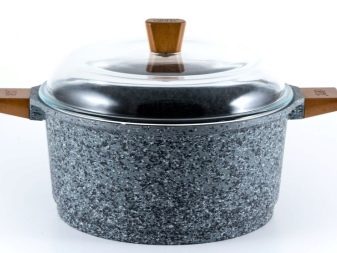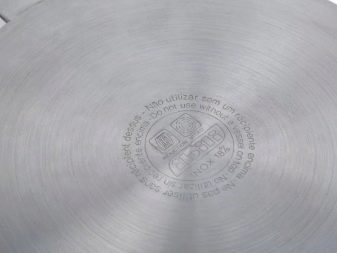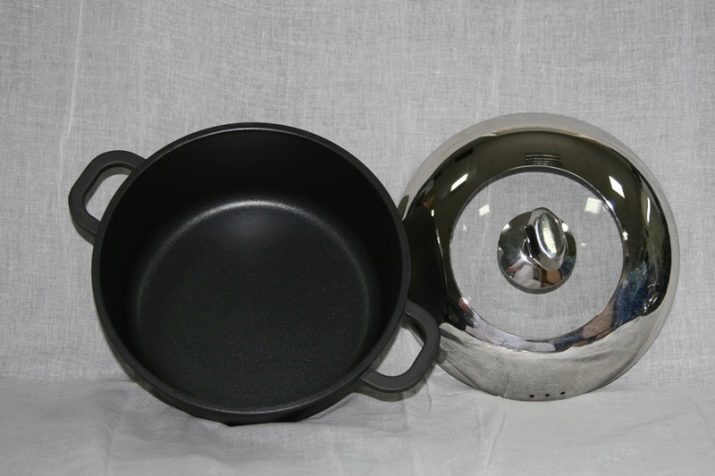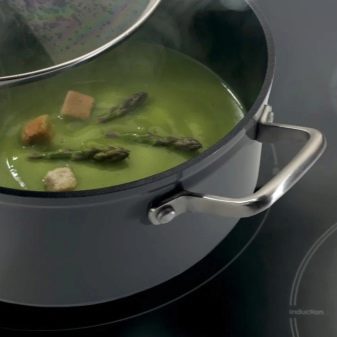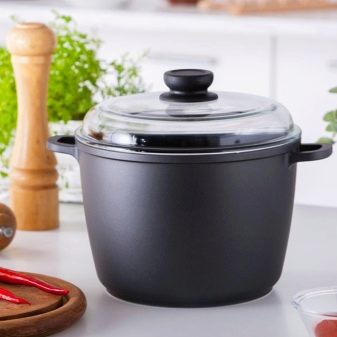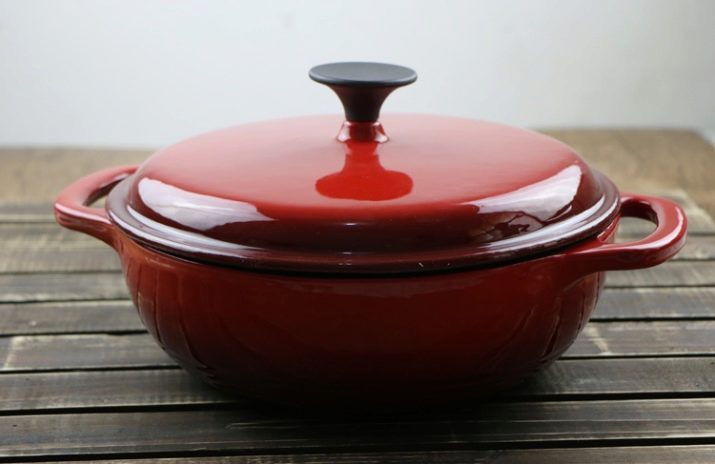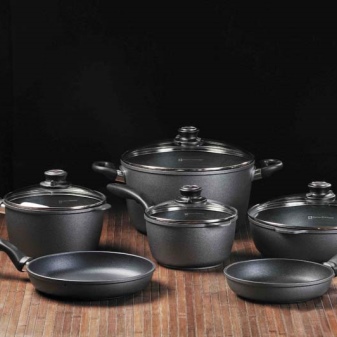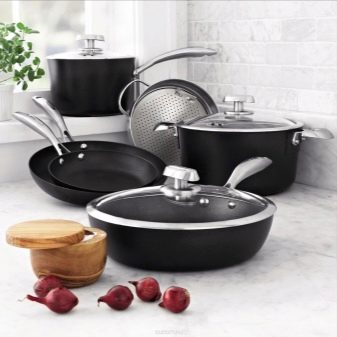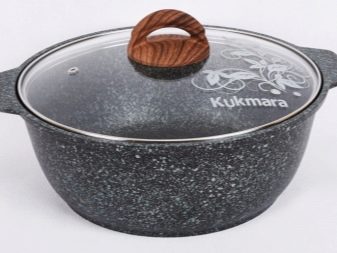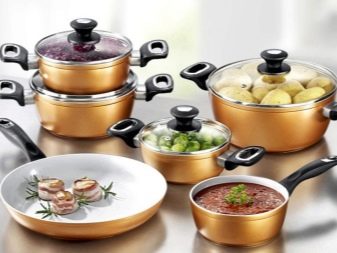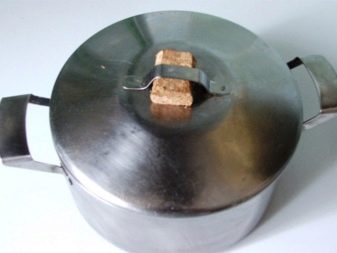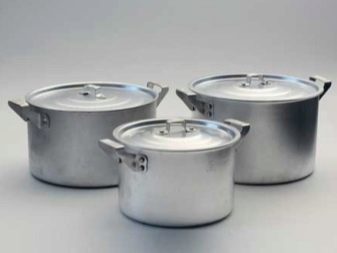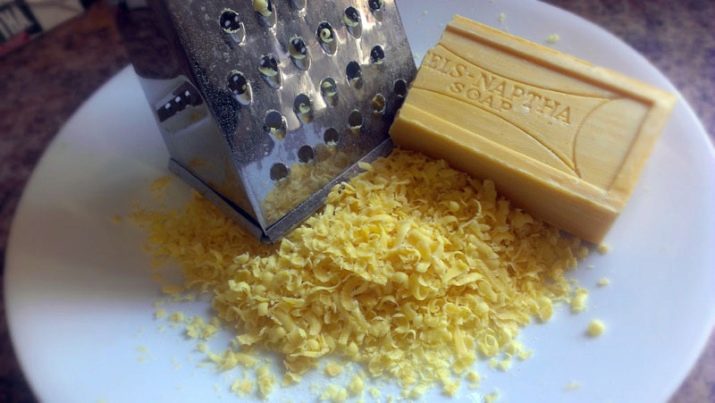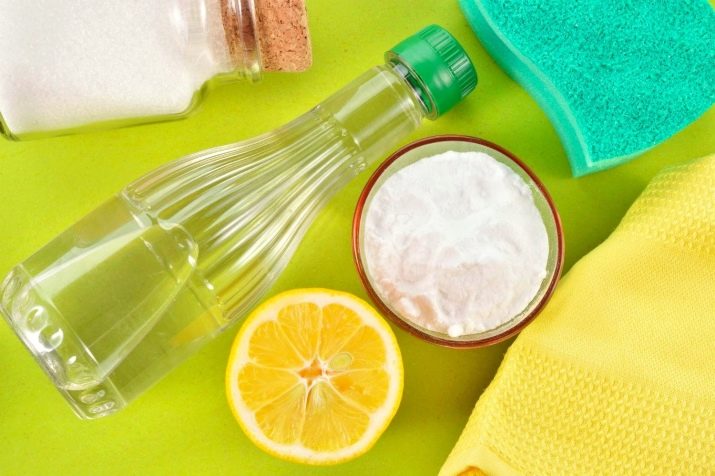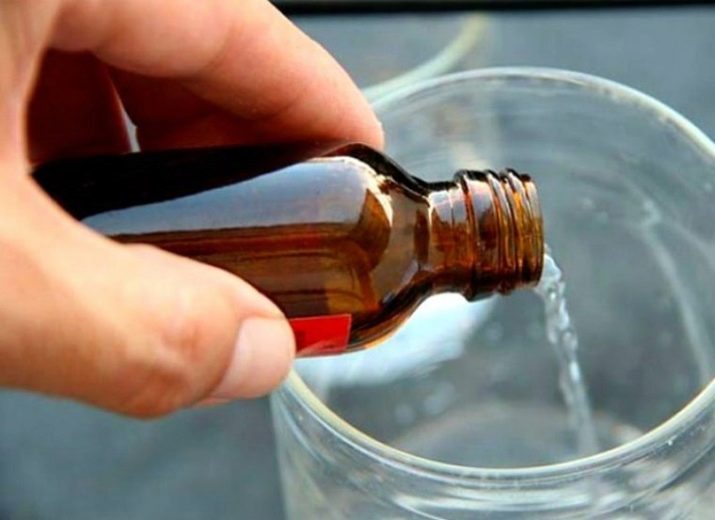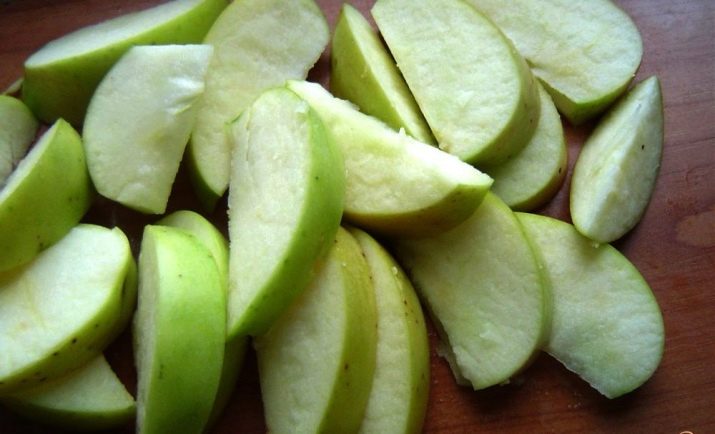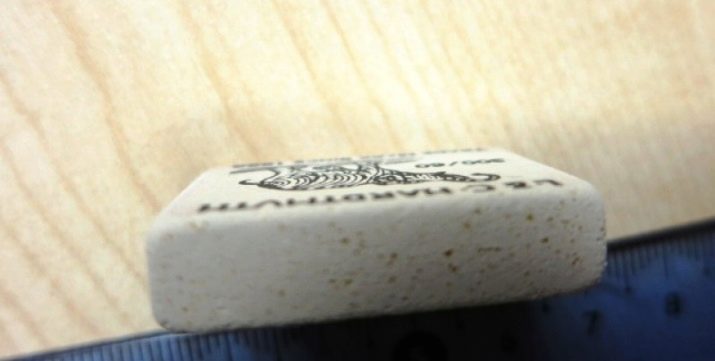Every housewife in the kitchen probably has at least one aluminum pan. Dishes from this material has long gained popularity and holds it to this day. Aluminum is a relatively inexpensive metal, and therefore its products are distinguished by an affordable price. However, the main advantage of such dishes recognized excellent thermal conductivity.
Advantages and disadvantages
As in any subject, in the aluminum pan you can find both positive sides and flaws. The advantages of aluminum cookware include:
- relatively low cost;
- lightness of products;
- high thermal conductivity and, consequently, saving time on cooking;
- corrosion resistance;
- ease of care;
- durability.
It is the low price of this type of dish that makes it affordable.. But not all pans made from this metal are cheap. Those made of cast aluminum are expensive and very high-quality utensils. Due to the lightness of the material, it is possible to produce pans of large sizes - for 40, 50 and even 100 liters in volume. Such containers are popular in catering establishments.
Since aluminum perfectly conducts heat, water in such dishes will boil much faster. With a lack of time, this nuance is very important. The pots are not afraid of open fire, they can be used for cooking on a gas hob or in the oven.
But besides the benefits, you need to take into account the disadvantages when using this type of cookware. Aluminum is a soft metal prone to deformation. For this reason, with intensive and careless cleaning of the product, scratches may remain on it. And because of even a slight blow, a dent will appear. Over time, dark stains or stains, scale from hard water may form on the dishes. Modern cleaners help to get rid of dirt without harming the pan.
If the bottom of the dish is thin and without a non-stick coating, there is a high probability that the food will burn. Products that contain acid, when heat treated in an aluminum container, produce a chemical reaction with the material, thereby causing a harmful effect on the body.
Aluminum pots can be used for cooking, but it is better to store cooked food in another container.
What are the?
Aluminum ware made in two ways: by stamping (sheet metal) and by casting. The first method is less expensive, therefore it is considered a budget option, and therefore more popular.
Stamping method
The essence of the manufacture of the product consists in stamping products from the finished aluminum sheet. Then the workpiece is subjected to embossing. This process involves a machine with a rotating blank. During embossing, metal thickness changes downwards are possible. In this way, large pans are made, but at the same time they have a small weight due to thin walls.
Manufacturers of dishes, trying to improve their own products, complement them with a non-stick coating or attach an anti-deformation disk to the bottom. However, such additions, as a rule, affect the price of the goods.
In addition to stamping, you can make extruded aluminum dishes using forging. This method is considered more expensive, but the dishes produced with its help are much stronger. Forged aluminum can not be deformed and has a high thermal conductivity.The durability and practicality of such kitchen utensils will make the process of cooking easy and enjoyable.
Casting method
Dishes made in this way are like cast iron. It has a thick bottom and walls, it allows you to warm the contents of the pan evenly and keep it warm for a long time. The production technology consists in pouring molten aluminum into prepared molds. It is important to know that using this method it is impossible to make a product of complex configuration. Cast pots are only simple shapes, otherwise they simply can not be removed from the workpiece.
Currently, for ease of use and an attractive appearance, manufacturers equip kitchen utensils with additional benefits, it could be:
- multilayer bottom;
- non-stick coating;
- exterior design.
The bottom, consisting of several layers of metal, prevents deformation and minimizes the heating time of the dishes. The product retains heat longer and is evenly distributed over the surface. To be used on an induction cooker, the manufacturer must indicate that in the additional bottom layer there is a ferromagnetic alloy, the basis of which is copper.
Non-stick coating provides an additional guarantee that the food will not burn during cooking. Even if the pan is used exclusively for cooking, additional internal coating will allow you to cook dishes in it, which are undesirable in ordinary aluminum dishes.
An additional layer to protect the product is applied in two ways: by rolling and by spraying. In the first case, a sheet of aluminum is coated with a non-stick solution before the pans are stamped. In the process of its manufacture, microcracks may occur, which over time will make themselves felt.
The second method (spraying) is processed already finished products. Such decoration is subjected mainly to forged or cast dishes, as the process is energy-intensive and expensive.
Aluminum pots from the inside are covered most often with the following coatings.
- Teflon. To him must be treated very carefully, so as not to damage. In the process of cooking it is recommended to use only silicone or wooden spoons, ladles, skimmers.
- Ceramic. With prolonged contact with liquids it may corrode. Suitable for cooking with minimal water use.
- Stone or titanium. The most practical and durable non-stick coating. Not afraid of contact with the metal and does not require special tools.
As for the appearance, everything depends on the price of the product. The most budget copies are left without any coverage. But it should be noted that such a pan, having served a very short time, loses its appeal. It may darken, get stained or stained. To prevent this from happening, On the outside of the dishes put another layer, which acts as a decor.
This is done in several ways: by applying colored lacquer or enamel, by anodizing and applying a solution of porcelain with further burning of the product. It is worth remembering that aluminum dishes with internal and external decoration can not be cheap.
Therefore, we must not forget for what purpose kitchen utensils will be purchased and whether it is necessary to overpay.
Criterias of choice
- To buy a suitable aluminum pan, you should determine its purpose. The volume of dishes is easy to calculate by comparing the number of family members with the standard portion. If these are, for example, macaroni, then for their cooking you will need a capacity of 3-5 liters, for the porridge it will be enough two-liter. Eggs can be cooked even in the liter.
- The stove will help to choose the diameter of the pan, and accordingly, the size of its bottom. When cooking on an electric stove, you need to make sure that the size of the bottom corresponds to the dimensions of the disk or spiral. With gas burners there will be no problems with any size of dishes.The same applies to glass-ceramic and induction plates. If the hob allows you to cook in pots of any diameter, then for faster cooking it is better to choose a wide and low.
- The purpose of the product will also help determine the desired thickness of the bottom and walls. For fast boiling and short-term use, thin-walled stamped products are suitable. And for long-term heat treatment is suitable cast or forged tableware.
- In order to be able to cook and store first dishes, sauces or stews in an aluminum pan, it must be coated with non-stick. How exactly - a matter of taste and wallet.
- There is always a lid in the set with the pan, the only exception is the stew pan. Usually its thickness and structure corresponds to the parameters of the product itself, and it fits snugly to the surface. The cover can also be made of aluminum, and some models are made with glass covers. It is desirable that it had a hole for steam.
- Handles - an integral element of the pan. Cheap models are equipped with handles of the same aluminum and fastened with rivets or solder. In the process of cooking, they also heat up and touch them only with the help of tacks. For more expensive products, the handles are made of materials resistant to heat, for example, bakelite or silicone.
- The handle on the lid is also important. It may be just an aluminum bracket, under which you can insert a cork for convenience. Most lids contain practical plastic handles.
- Before buying a pan, you need to carefully inspect the product. Check for dents and scratches. Make sure that the handles are secure. If there is a non-stick or external coating, make sure that there are no cracks or chips.
Terms of care and use
Now on sale there is a huge amount of household chemicals for the kitchen and specifically for aluminum cookware. Some of them are not very effective, others are not entirely safe. Therefore, there are many popular ways to clean the pan from ingrained carbon deposits or scum. On some you can stay in more detail.
- Blackness from the walls of dishes can be removed, boiling the product in a solution of 10 liters of water, a glass of soda, a piece of soap, rubbed on a grater, and 150 g of silicate glue. This should be done within 10 minutes. Rinse dishes under running water and dry.
- You can whiten the pot using 9% vinegar or citric acid.. They are also diluted with water and boiled for 15 minutes. Remove black from the surface can be soda. It will take physical effort and a hard sponge.
- Descale helps liquid ammonia - about 10 drops together with 1/3 of a piece of soap and 1 tablespoon of soda. All this diluted in a little water. Pour the container with the solution, let it stand for 1 hour, rinse well in running water. From vinegar also saves vinegar. It also needs to be dissolved in water and boiled for 15 minutes.
- If the aluminum pan darkens after boiling water, you can bleach it by rubbing it with a cut sour apple.. It also helps to apply to the moistened surface of tooth powder. This is done at night, then it is necessary to rinse well and dry the pan.
- Again, to restore the pan to its original appearance helps rubbing it with a regular school eraser. Even if it is blackened inside, this method will help eliminate all stains. Before you re-use the dishes to the destination, it should be very well washed.
Cookware made of aluminum can be involved in the cooking process on either a gas or electric or on a glass-ceramic stove. The main thing is that this possibility was indicated by the manufacturer, and the corresponding metal disk was present at the bottom.
In the oven, you can put any aluminum dishes, except the one that has plastic handles. You can cook food in each of the models, but you can only store it in containers with a non-stick coating.Salting lard or meat is also allowed under the condition of special internal coating. Aluminum can react with the salt and oxidize.
Cook porridge, pasta, dumplings, eggs, vegetables, meat - for this and many other suitable aluminum pans.
How to clean the aluminum pan from burning, see the next video.
